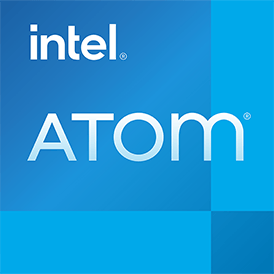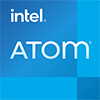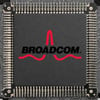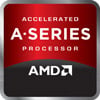
Intel Atom D2550 vs Intel Celeron N2815
Last updated:
CPU comparison with benchmarks

|
 |

|
| Intel Atom D2550 | Intel Celeron N2815 | |
CPU comparisonIn this CPU comparison, we compare the Intel Atom D2550 and the Intel Celeron N2815 and use benchmarks to check which processor is faster.
We compare the Intel Atom D2550 2 core processor released in Q1/2012 with the Intel Celeron N2815 which has 2 CPU cores and was introduced in Q4/2013. |
||
| Intel Atom (101) | Family | Intel Celeron (165) |
| Intel Atom D2000 (4) | CPU group | Intel Celeron J1000/N2000 (17) |
| 1 | Generation | 6 |
| Cedarview | Architecture | Bay Trail |
| Desktop / Server | Segment | Mobile |
| -- | Predecessor | -- |
| -- | Successor | -- |
|
|
||
CPU Cores and Base FrequencyThe Intel Atom D2550 is a 2 core processor with a clock frequency of 1.86 GHz. The processor can compute 4 threads at the same time. The Intel Celeron N2815 clocks with 1.86 GHz (2.13 GHz), has 2 CPU cores and can calculate 2 threads in parallel. |
||
| Intel Atom D2550 | Characteristic | Intel Celeron N2815 |
| 2 | Cores | 2 |
| 4 | Threads | 2 |
| normal | Core architecture | normal |
| Yes | Hyperthreading | No |
| No | Overclocking ? | No |
| 1.86 GHz | Frequency | 1.86 GHz |
| -- | Turbo Frequency (1 Core) | 2.13 GHz |
| -- | Turbo Frequency (All Cores) | 2.13 GHz |
Internal GraphicsGraphics (iGPU) integrated into the processor not only enable image output without having to rely on a dedicated graphics solution, but can also efficiently accelerate video playback. |
||
| Intel GMA 3650 | GPU | Intel HD Graphics (Bay Trail GT1) |
| 0.64 GHz | GPU frequency | 0.31 GHz |
| -- | GPU (Turbo) | 0.76 GHz |
| -- | GPU Generation | 7 |
| 65 nm | Technology | 22 nm |
| 2 | Max. displays | 2 |
| 4 | Compute units | 4 |
| 32 | Shader | 32 |
| No | Hardware Raytracing | No |
| No | Frame Generation | No |
| 1 GB | Max. GPU Memory | 2 GB |
| 10.1 | DirectX Version | 11.2 |
Hardware codec supportA photo or video codec that is accelerated in hardware can greatly accelerate the working speed of a processor and extend the battery life of notebooks or smartphones when playing videos. |
||
| Intel GMA 3650 | GPU | Intel HD Graphics (Bay Trail GT1) |
| No | Codec h265 / HEVC (8 bit) | No |
| No | Codec h265 / HEVC (10 bit) | No |
| No | Codec h264 | Decode / Encode |
| No | Codec VP9 | No |
| No | Codec VP8 | No |
| No | Codec AV1 | No |
| No | Codec AVC | Decode / Encode |
| No | Codec VC-1 | Decode |
| No | Codec JPEG | Decode |
Memory & PCIeUp to 4 GB of memory in a maximum of 1 memory channels is supported by the Intel Atom D2550, while the Intel Celeron N2815 supports a maximum of 8 GB of memory with a maximum memory bandwidth of 17.1 GB/s enabled. |
||
| Intel Atom D2550 | Characteristic | Intel Celeron N2815 |
| DDR3-1066 | Memory | DDR3-1066 |
| 4 GB | Max. Memory | 8 GB |
| 1 (Single Channel) | Memory channels | 2 (Dual Channel) |
| 8.6 GB/s | Max. Bandwidth | 17.1 GB/s |
| No | ECC | No |
| -- | L2 Cache | -- |
| 1.00 MB | L3 Cache | 1.00 MB |
| -- | PCIe version | 2.0 |
| -- | PCIe lanes | 4 |
| -- | PCIe Bandwidth | 2.0 GB/s |
Thermal ManagementThe Intel Atom D2550 has a TDP of 10 W. The TDP of the Intel Celeron N2815 is 7.5 W. System integrators use the TDP of the processor as a guide when dimensioning the cooling solution. |
||
| Intel Atom D2550 | Characteristic | Intel Celeron N2815 |
| 10 W | TDP (PL1 / PBP) | 7.5 W |
| -- | TDP (PL2) | -- |
| -- | TDP up | -- |
| -- | TDP down | 4.5 W |
| -- | Tjunction max. | 105 °C |
Technical detailsThe Intel Atom D2550 has 1.00 MB cache and is manufactured in 32 nm. The cache of Intel Celeron N2815 is at 1.00 MB. The processor is manufactured in 22 nm. |
||
| Intel Atom D2550 | Characteristic | Intel Celeron N2815 |
| 32 nm | Technology | 22 nm |
| Monolithic | Chip design | Monolithic |
| x86-64 (64 bit) | Instruction set (ISA) | x86-64 (64 bit) |
| SSE3 | ISA extensions | SSE4.1, SSE4.2 |
| BGA 559 | Socket | BGA 1170 |
| None | Virtualization | VT-x, VT-x EPT |
| No | AES-NI | No |
| Windows 10, Linux | Operating systems | Windows 10, Linux |
| Q1/2012 | Release date | Q4/2013 |
| 38 $ | Release price | -- |
| show more data | show more data | |
Rate these processors
Average performance in benchmarks
⌀ Single core performance in 1 CPU benchmarks
⌀ Multi core performance in 2 CPU benchmarks
Geekbench 5, 64bit (Single-Core)
Geekbench 5 is a cross plattform benchmark that heavily uses the systems memory. A fast memory will push the result a lot. The single-core test only uses one CPU core, the amount of cores or hyperthreading ability doesn't count.
|
|
Intel Atom D2550
2C 4T @ 1.86 GHz |
||
|
|
Intel Celeron N2815
2C 2T @ 2.13 GHz |
||
Geekbench 5, 64bit (Multi-Core)
Geekbench 5 is a cross plattform benchmark that heavily uses the systems memory. A fast memory will push the result a lot. The multi-core test involves all CPU cores and taks a big advantage of hyperthreading.
|
|
Intel Atom D2550
2C 4T @ 1.86 GHz |
||
|
|
Intel Celeron N2815
2C 2T @ 2.13 GHz |
||
iGPU - FP32 Performance (Single-precision GFLOPS)
The theoretical computing performance of the internal graphics unit of the processor with simple accuracy (32 bit) in GFLOPS. GFLOPS indicates how many billion floating point operations the iGPU can perform per second.
|
|
Intel Atom D2550
Intel GMA 3650 @ 0.64 GHz |
||
|
|
Intel Celeron N2815
Intel HD Graphics (Bay Trail GT1) @ 0.76 GHz |
||
Estimated results for PassMark CPU Mark
Some of the CPUs listed below have been benchmarked by CPU-monkey. However the majority of CPUs have not been tested and the results have been estimated by a CPU-monkey’s secret proprietary formula. As such they do not accurately reflect the actual Passmark CPU mark values and are not endorsed by PassMark Software Pty Ltd.
|
|
Intel Atom D2550
2C 4T @ 1.86 GHz |
||
|
|
Intel Celeron N2815
2C 2T @ 2.13 GHz |
||
Cinebench R15 (Single-Core)
Cinebench R15 is the successor of Cinebench 11.5 and is also based on the Cinema 4 Suite. Cinema 4 is a worldwide used software to create 3D forms. The single-core test only uses one CPU core, the amount of cores or hyperthreading ability doesn't count.
|
|
Intel Atom D2550
2C 4T @ 1.86 GHz |
||
|
|
Intel Celeron N2815
2C 2T @ 2.13 GHz |
||
Cinebench R15 (Multi-Core)
Cinebench R15 is the successor of Cinebench 11.5 and is also based on the Cinema 4 Suite. Cinema 4 is a worldwide used software to create 3D forms. The multi-core test involves all CPU cores and taks a big advantage of hyperthreading.
|
|
Intel Atom D2550
2C 4T @ 1.86 GHz |
||
|
|
Intel Celeron N2815
2C 2T @ 2.13 GHz |
||
Devices using this processor |
|
| Intel Atom D2550 | Intel Celeron N2815 |
| Unknown | Unknown |
Popular comparisons containing this CPUs
back to index











